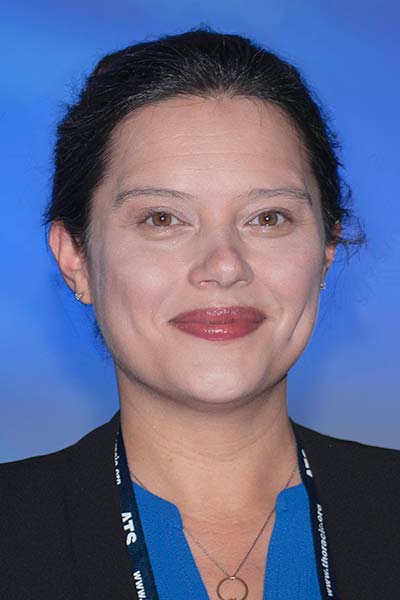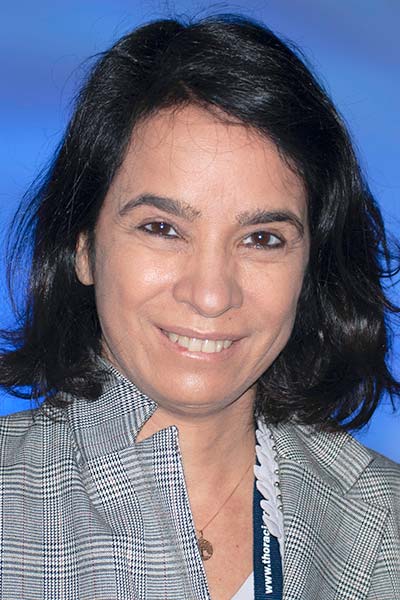The third of four Clinical Year in Review sessions was held on Tuesday, May 17, and featured reviews of some of the most important and impactful papers published over the past year in critical care, cystic fibrosis, sepsis, and bronchiectasis.


Elizabeth Wilcox, MD, PhD, ATSF, of the University of Toronto, Canada, opened the session with a review of some of the latest literature in general critical care, including recent findings reported from the BOUGIE trial on the use of a bougie versus endotracheal tube with stylet on successful intubation on the first attempt among critically ill patients undergoing tracheal intubation.
“This multicenter, randomized controlled trial showed no difference in first-pass success when comparing the use of a bougie to a stylet,” Dr. Wilcox said. “However, there was a significantly lower rate of first-pass success in the BOUGIE trial as compared to the BEAM trial, for example, possibly due to site-specific effects. Reported comfort with different devices between centers was variable. Perhaps the main lesson to take away from this is that we all should really attempt to master both techniques.”
Next, Christine Marie Bojanowski, MD, of Tulane University School of Medicine, reviewed some of the most recent study results in cystic fibrosis, including findings from an analysis of surveys completed by people with CF, CF care programs, and the CF Foundation Patient Registry in order to examine the impact of COVID-19 and the use of telehealth in CF clinical care.
“Differences were identified in telehealth use and care perceptions by ethnicity, race, and socioeconomic characteristics,” Dr. Bojanowski said. “Notably, racial and ethnic minorities were less likely to have had a telehealth visit. This was most pronounced amongst the Hispanic and Latino population.”
Additionally, she said that individuals who reported financial difficulties found telehealth more difficult to use and were less likely to believe that their concerns were addressed during telehealth visits.
“Telehealth is likely to continue to be an important aspect of CF care; however, in order to provide equitable CF telehealth services, further studies are needed to better understand the barriers and promoters to use amongst a diverse population of people with CF,” she said.


Flavia R. Machado, PhD, MD, of Universidade Federal de Sāo Paulo, Brazil, followed with a review of recent literature related to the treatment of sepsis, including findings from a study looking at the global burden of antimicrobial multidrug resistance in sepsis.
“The highest burden is, as expected, in low-resource settings where the prevalence of infections is higher and prevention strategies, quality of care, laboratory infrastructure to guide treatment, insufficient regulations, and inadequate access are drivers for resistance,” Dr. Machado said. “Understanding the burden of AMR is a key step to reduce sepsis AMR deaths by enhancing prevention strategies, improving current vaccination programs, reducing unnecessary exposure to antibiotics, improvement of stewardship programs, increasing access to current available antibiotics, and the development of new ones all around the world.”
In the final presentation of the session, Wael ElMaraachli, MD, of the University of California, San Diego, discussed the latest findings in bronchiectasis, including the results of a recent study looking at bronchoscopic airway clearance therapy for acute exacerbations of bronchiectasis.
In this study, patients in the intervention arm received bronchoscopy with suctioning of secretions in addition to usual therapy, while the patients in the control arm received only usual therapy. Usual therapy consisted of antibiotics chosen by the treating physician and other airway clearance measures.
“This is the first randomized controlled trial that aims to explore the benefits and risks of B-ACT therapy in managing acute bronchiectasis exacerbations,” Dr. ElMaraachli said. “Among the findings, there was a statistically significant increase in the clinically meaningful primary outcome of time to first exacerbation after bronchoscopy as compared to usual therapy.”
REGISTER FOR ATS 2024
Register today for the ATS 2024 International Conference! Don’t miss this opportunity to take part in the in-person conference, May 17-22 in San Diego. Join your colleagues to learn about the latest developments in pulmonary, critical care, and sleep medicine.
Not an ATS member? Join today and save up to $540.
